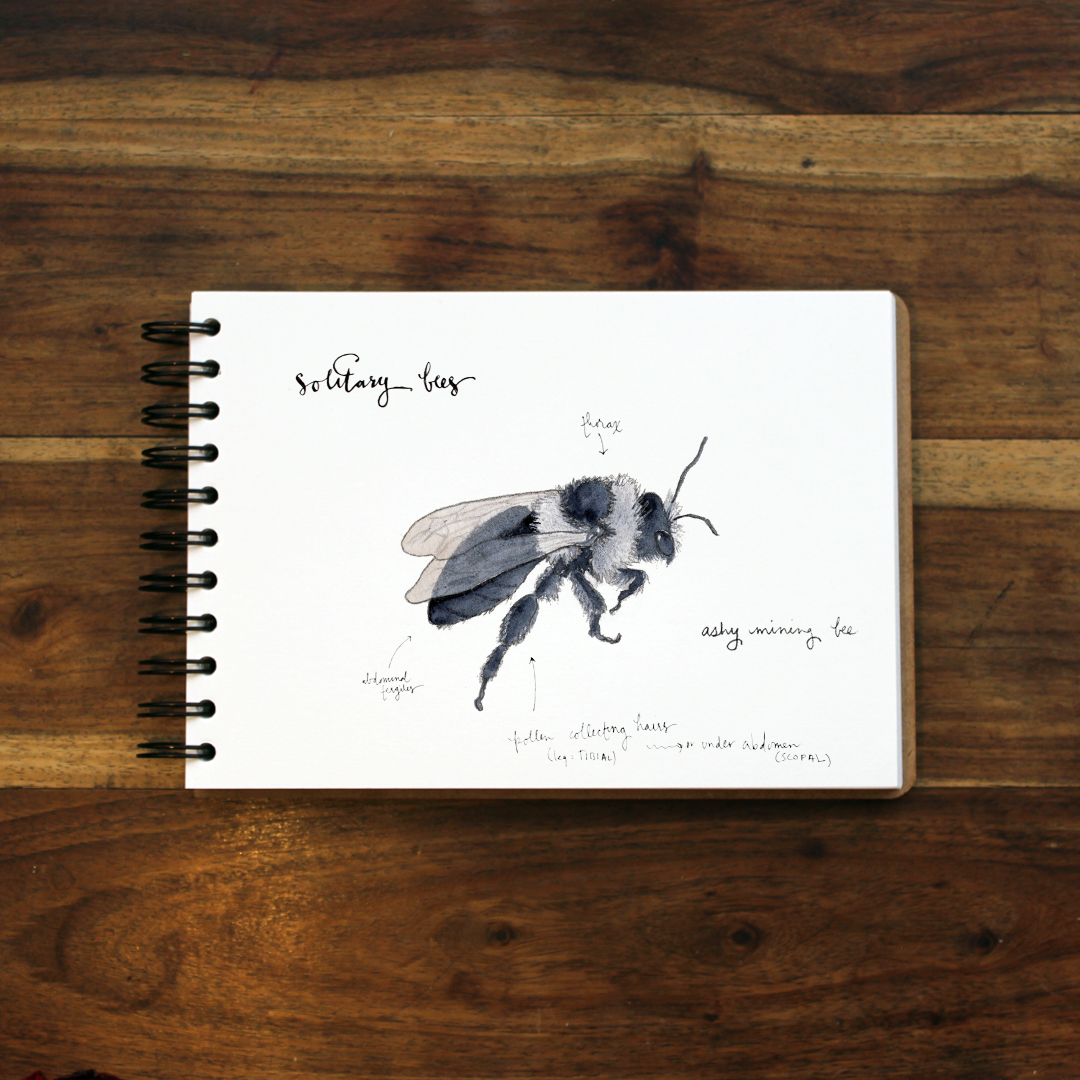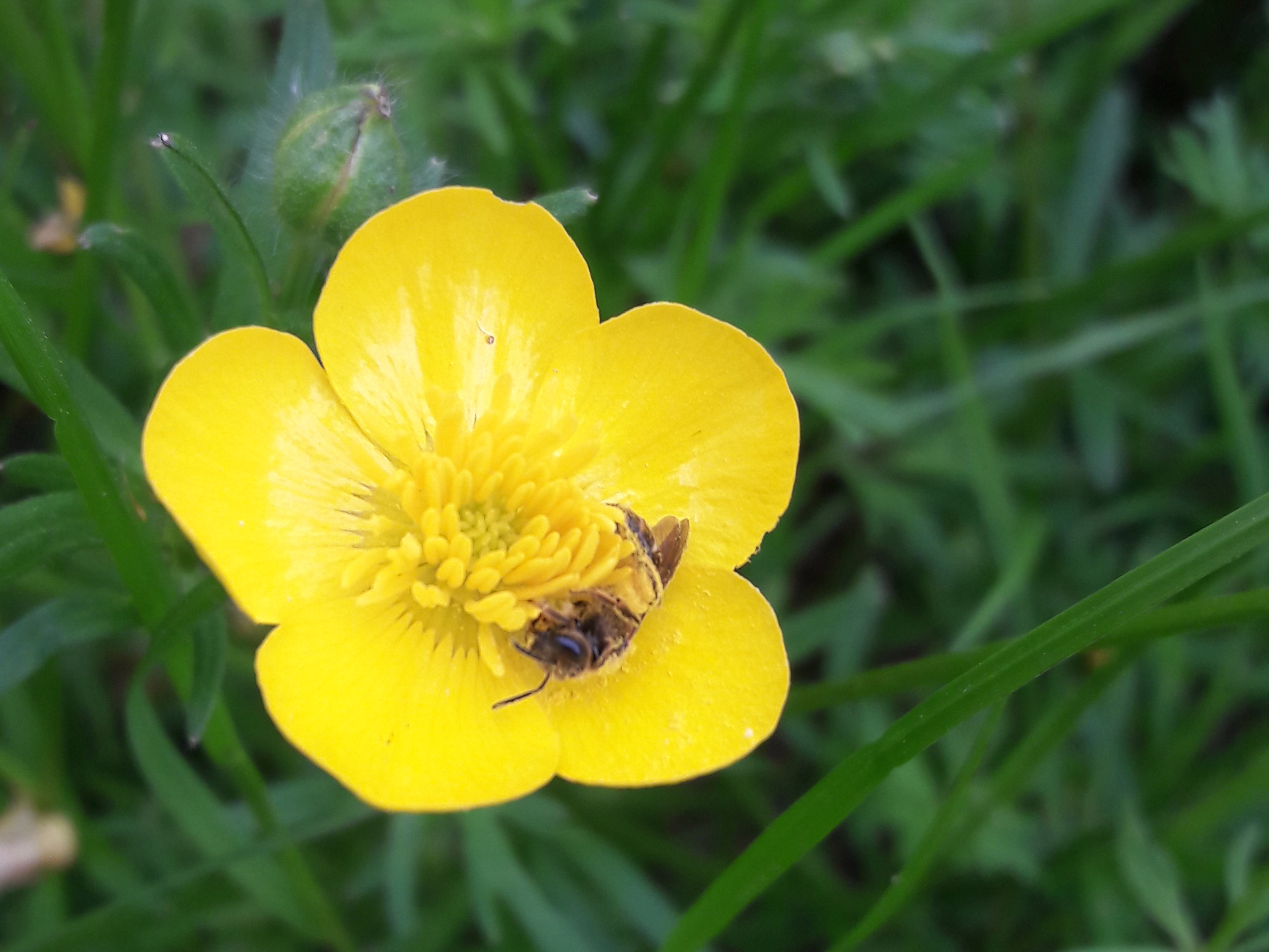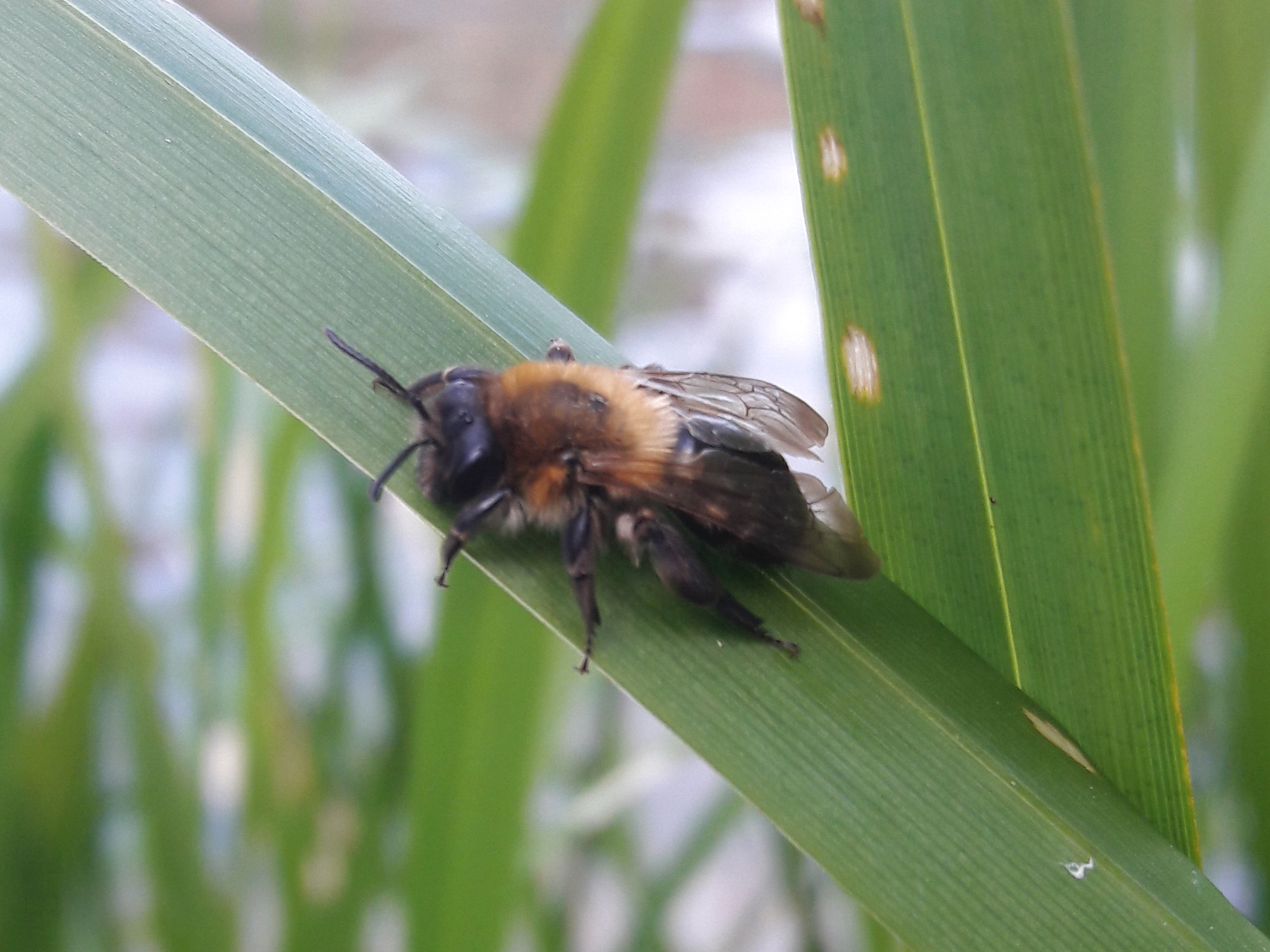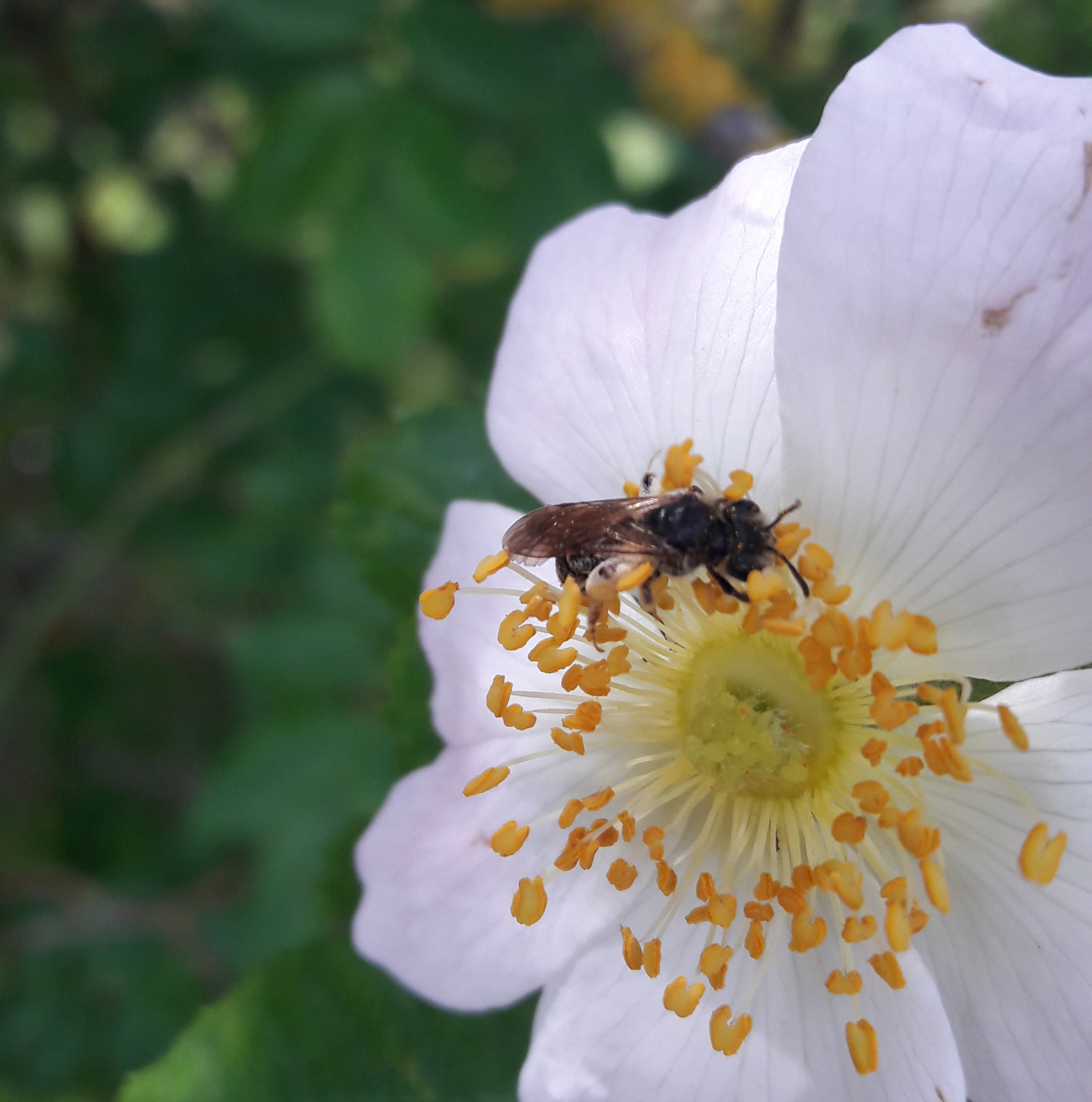



Today’s entry is in honour of the great virtual meet up I attended, presented by Aaron Bhambra and organised by the Field Studies Council. I’ve mentioned the FSC Biolinks Virtual Meet Ups previously and I’ve been attending at least one a week since they started and they are great! Today’s session was on identifying solitary bees and it was fascinating.
Most of Britain’s bees are solitary bees and they are amazingly effective pollinators too and they out perform honey bees significantly in that regard. One red mason bee can pollinate as many flowers in its lifetime as 120 honey bees – that’s incredible! The reason is solitary bees (such as mining bees, mason bees, or leafcutter bees) collect dry pollen, on hairs on their legs (tibial) or under their belly (scopal), whereas social bees (bumblebees and honey bees) collect wet pollen and form it into balls that they store on in pollen baskets (corbicula) on their hind legs. The dry method spreads a lot more pollen around, ergo more effective pollinators!
I already know a fair bit about bee identification but I learned so much more today. Like female bees have 12 antenna segments, while males have 13. Or that there are more species of fly in the UK alone than there are species of mammal in the entire world. I spent most of the talk with my mouth agape in amazement; the sheer abundance and diversity of insects in general really astounds me. I’ve chosen to depict the ashy mining bee, but it is one of over 240 species of solitary bee in the UK.
When the recording becomes available, I’m going probably to watch this presentation again because there was so much information in there. Highly recommend!